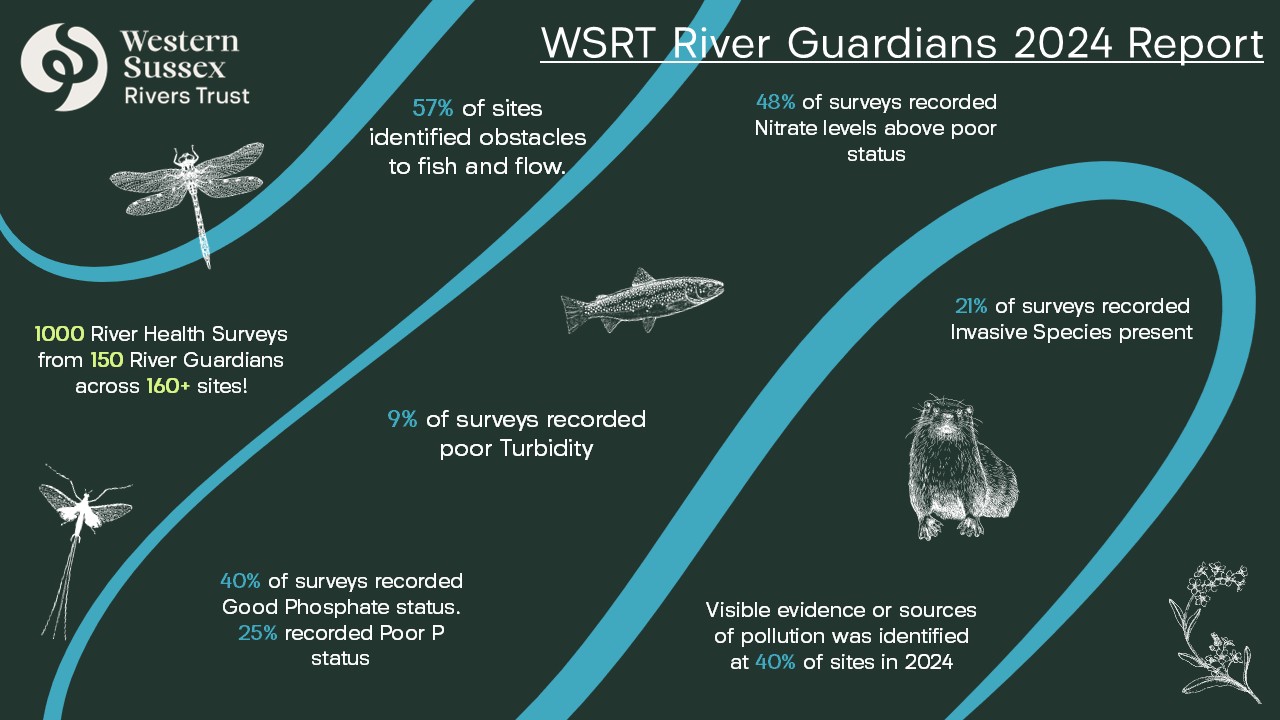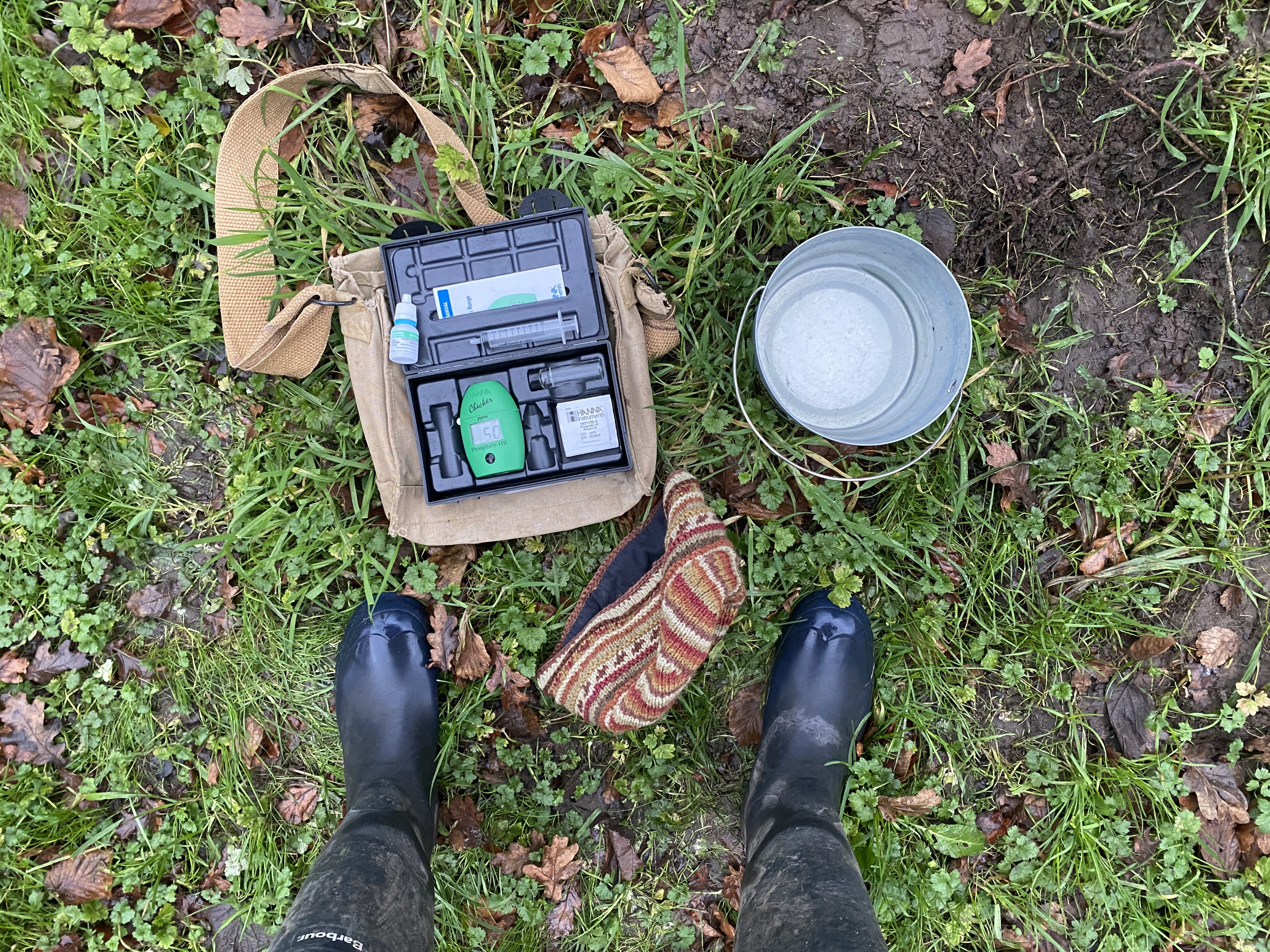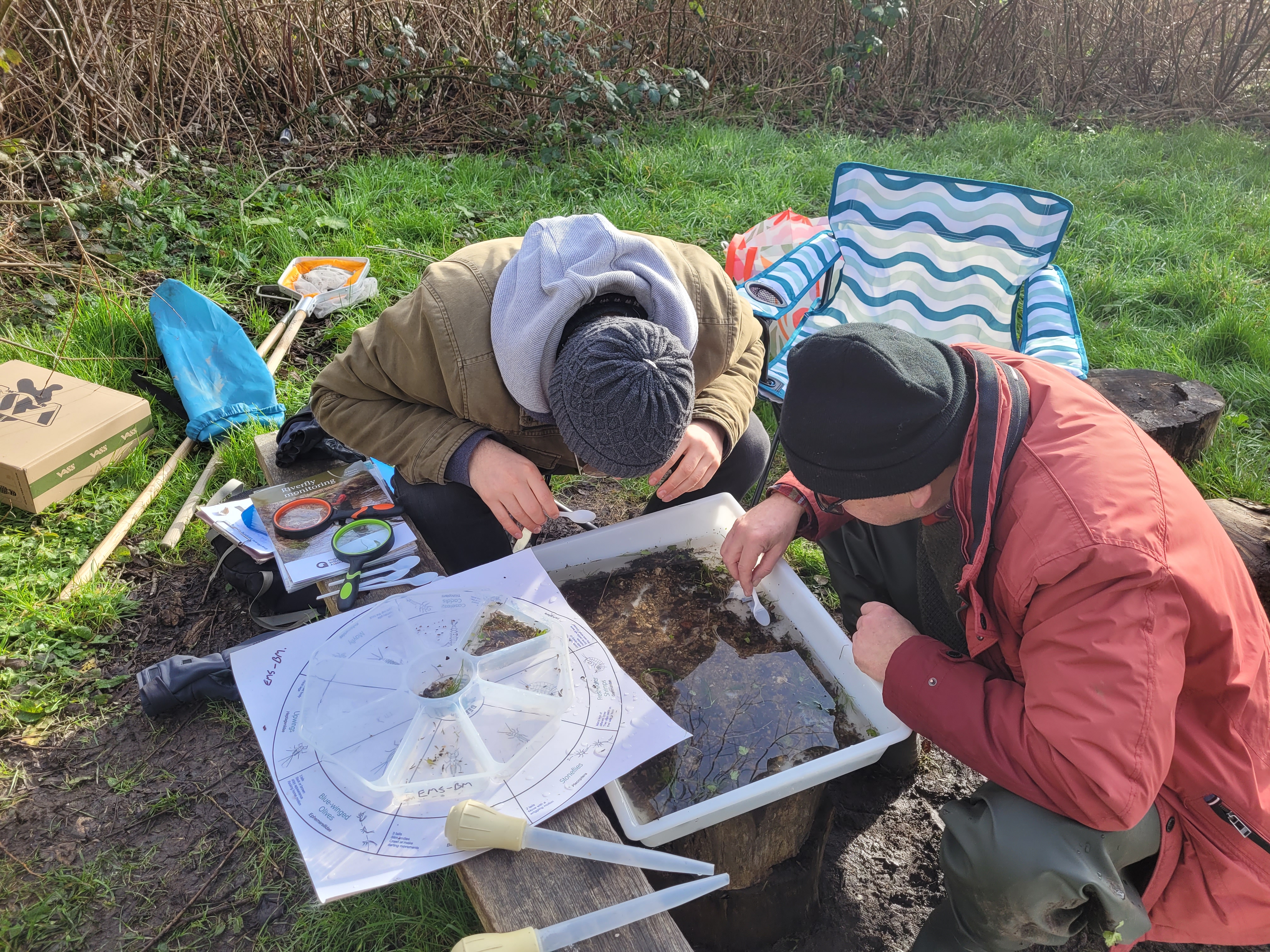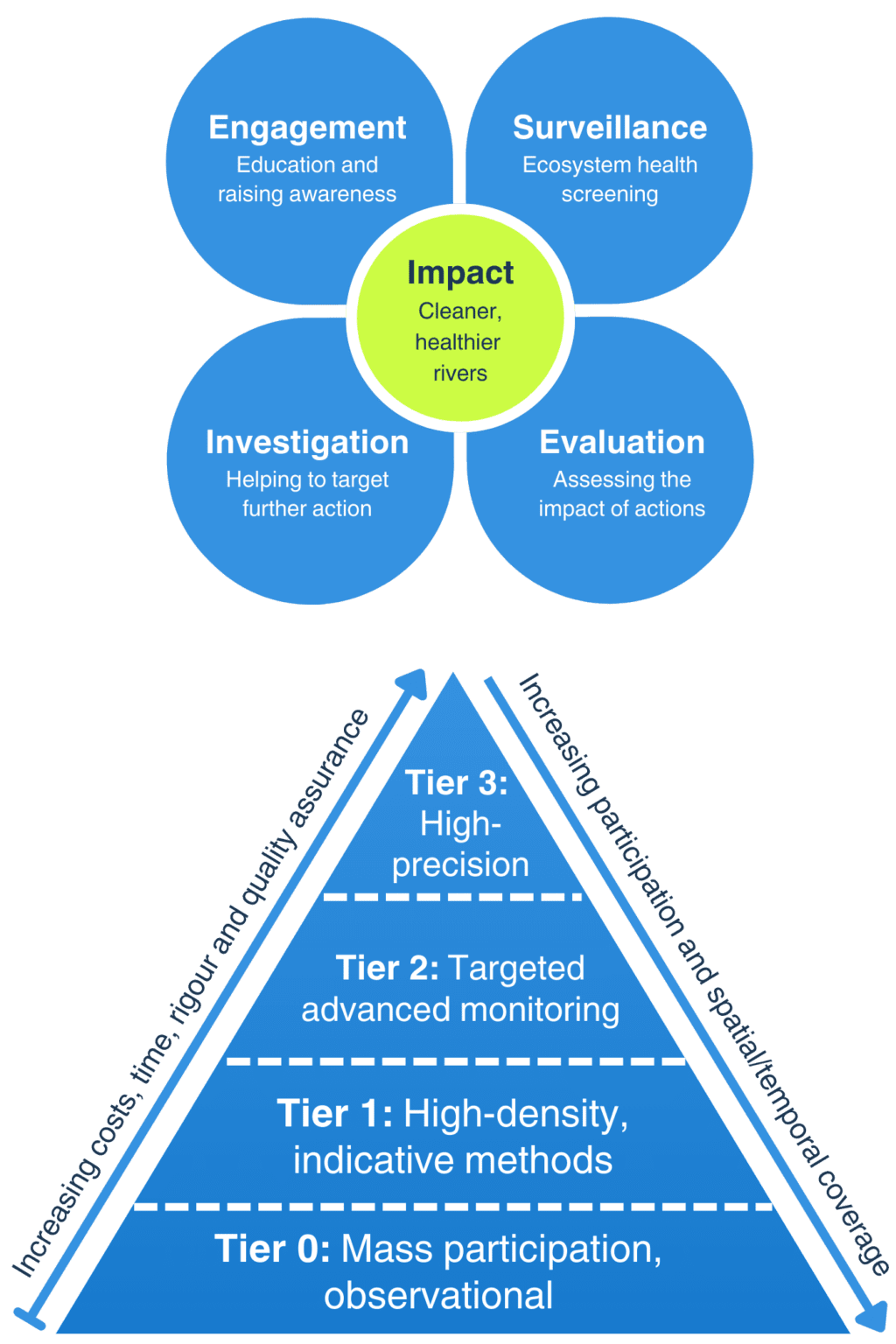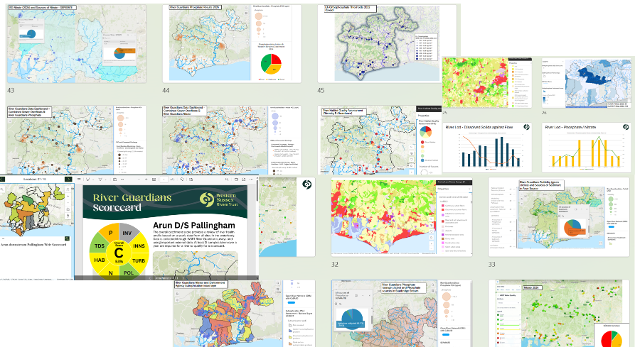Western Sussex River Guardians
A pioneering citizen science initiative making waves in the Arun and Western Streams Catchment.
Western Sussex River Guardians (WSRT) is a pioneering citizen science initiative within the Arun & Western Streams Catchment, aimed at addressing gaps in water quality and river health monitoring. As part of the national Catchment Systems Thinking Cooperative (CaSTCo) project, we empower volunteers with water testing kits, training, and an open-access data platform to contribute to a meaningful, long-term dataset.
Despite zero waterbodies in the catchment currently meeting the Water Framework Directive (WFD) standards, WSRT River Guardians are making a difference by identifying pollution sources, monitoring trends, and advocating for sustainable river management solutions. Our efforts help guide decision-making for local authorities, environmental groups, habitat enhancement & restoration projects.
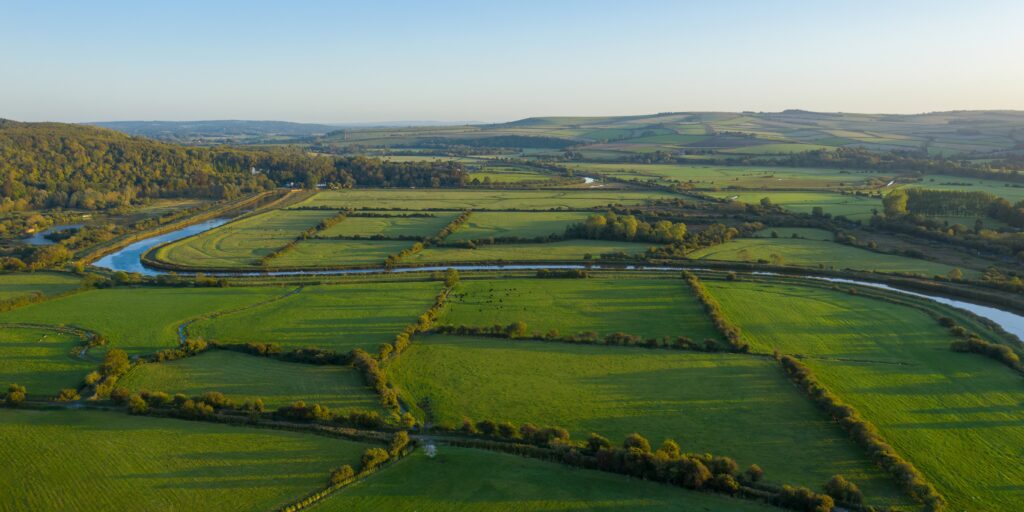
The challenge: a lack of comprehensive monitoring
Across the Arun & Western Streams Catchment, monitoring coverage by regulatory bodies such as the Environment Agency (EA) has been limited. Without sufficient spatial and temporal data, communities, policymakers, and conservation groups have little information on which areas require urgent intervention and which rivers are in good ecological health.
Key issues are insufficient data coverage (patchy water quality monitoring prevents accurate assessments of river health), pollution uncertainty (without baseline data, identifying pollution events and their sources is challenging), and community concerns (local communities have raised questions about water quality but lack access to reliable data). To address these issues, WSRT initiated a citizen science approach to increase the coverage, frequency, and transparency of river health monitoring as part of the CaSTco project.
Who
This project is supported by a network of dedicated organizations:
- Western Sussex River Trust – Project lead, volunteer training, data collection
- Southern Water – Supporting with monitoring strategies and existing monitoring sites/schedules.
- Environment Agency – Regulatory oversight, policy integration
- The Rivers Trust – Data dashboard and collaborative monitoring support
- Countryside & Community Research Institute (CCRI)– Citizen science engagement and workshop support
Where
The Arun and Western Streams catchment covers 1,490 square kilometres and mainly lies within the South Downs National Park. The catchment includes the Rivers of the Western Rother, the Arun and several small coastal streams, and is predominantly rural with key towns being Worthing, Bognor Regis, Chichester, Arundel, Midhurst and Horsham.

Our approach: empowering citizen scientists
Since January 2024, WSRT River Guardians & volunteers have conducted over 1100 River Health Surveys using standardized testing kits that measure:
- Phosphates
- Turbidity
- Total Dissolved Solids (TDS)
- Nitrates
- Temperature
Each survey also collects observational assessment data on river characteristics and ecosystems, pollution indicators and wildlife observations. Our data is open-access and available at:
🔗 https://wsrt.org.uk/get-involved/water-monitoring
Volunteers receive training on water sampling methods, data entry, and ecological assessment techniques to ensure consistency and scientific validity. The project also fosters collaboration with groups that have previously conducted water quality monitoring, unifying efforts across the region.
1,400+
River health surveys completed
160+
River Guardians recruited and trained
18
River health scorecards created
48%
of surveys showed elevated levels of nitrate

Demonstrating CaSTCo principles
This project has allowed us to compare Water Quality monitoring methodologies from Tier 1 (affordable, simple, lower precision dip sticks etc), Tier 2 (more involved, higher resolution kits), Tier 3 (highly precise lab testing).
Testing new testing methodologies, evaluating cost, accessibility and reliability of data, including:
- Lovibond MD610 (Tier 2)
- Oxfam Turbidity Tube (Tier 1)
- Hach SL1000 (Tier 2)
- Hanna Phosphate Checker (Tier 1).
River Health Scorecards – integrate both citizen science and external monitoring data (EA, INNS Mapper, CSO Spills).
Arun & Western Streams River Health Data Dashboard – combining a variety of external data layers with local Water Quality & River Health citizen science data. To build a local ‘Weight of Evidence’ approach.
Results and impact
This project transformed local water monitoring by:
- Greatly expanding monitoring coverage across the catchment
- Building a reliable, long-term dataset for assessing water quality
- Detecting pollution in real time and triggering reports to the Environment Agency and Southern Water
- Engaging communities in river stewardship and freshwater protection
- Supporting future mitigation projects like wetlands, SuDS, and advanced monitoring programs
Data visualization and analysis
Results are shared through interactive tools—including Cartographer, ArcGIS Experience Hub, and WSRT River Health Scorecards—making complex data accessible to communities and decision-makers. Summarizing large datasets into clear, local River Health reports was key to empowering action in 2024.
Benefits of community co-creation
WSRT co-created this River Health monitoring initiative in partnership with volunteers, Southern Water, the Countryside and Community Research Institute (CCRI), and the Environment Agency. From the start, citizen scientists played a central role in shaping data collection methods, sharing approaches, engagement strategies, and future goals.
By involving volunteers early in the planning process, the project identified key catchment issues and tailored training and data-sharing to community needs, helping sustain long-term engagement and support.

Data sharing
River Guardians prides itself on gathering open-source data that is accessible to all. The River Health data collected by volunteers is hosted on Cartographer. We’ve created a data hub which encourages further investigations into our citizen science results, embedding external data to paint a clearer picture of pollution sources and pathways, and providing the tools for both Catchment Partners and Citizen Scientists to truly understand what their results and findings mean.
We’ve also created River Health Scorecards, which collate River Guardians Water Quality Data & Observations with Environment Agency data on Invertebrates, Pollution, Invasive Species and River Habitat Abundance/Diversity. This allows communities and local authorities to review their local river health at a glance.
Next steps: expanding the impact
As we recently passed our 12-month monitoring milestone, WSRT is shifting focus to the next phase of the project:
- Data review & dissemination: Conducting in-depth analysis to identify key trends and areas for intervention.
- Community & partner engagement: Sharing findings with volunteers, local authorities, and environmental organizations to drive action.
- Scaling up monitoring: Expanding coverage to ensure as many rivers and streams within the catchment are monitored effectively.
- Advocating for change: Using our data to push for policy improvements, habitat restoration, and pollution mitigation efforts.
Our goal is to establish a long-term, community-led monitoring network that informs evidence-based decision-making and protects the future of river systems within the Arun & Western Streams Catchment.
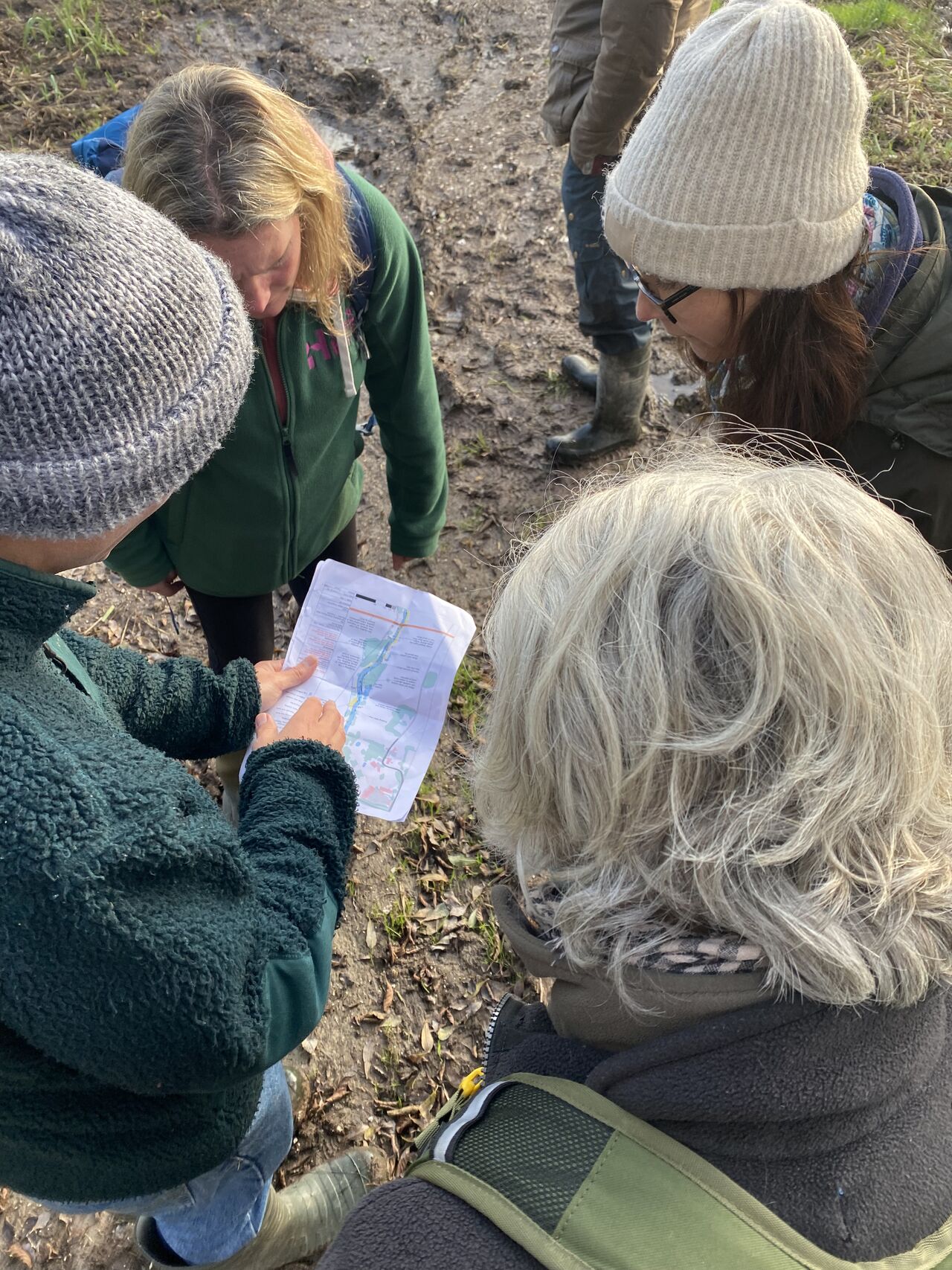

Conclusion: a model for citizen science success
The WSRT River Guardians project exemplifies how citizen science can fill critical data gaps, drive environmental action, and foster community engagement. By equipping volunteers with tools, training, and an open-access data platform, we are empowering local communities to become active stewards of their rivers.
With continuous monitoring, data-driven decision-making, and collaborative partnerships, this initiative is setting a new standard for freshwater conservation in Hampshire & Sussex.
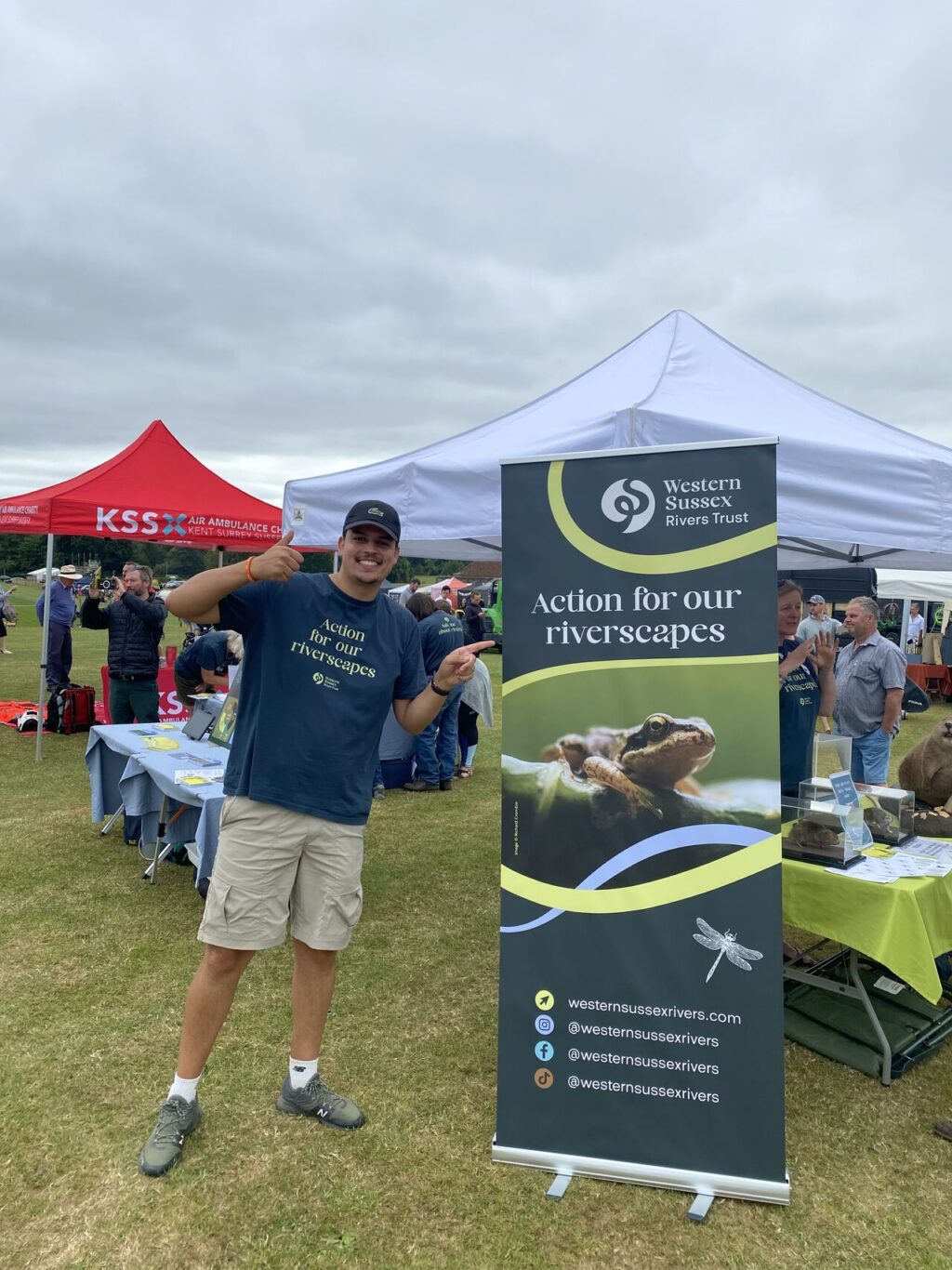
Moving forwards we want to continue refining our water quality test kits, discovering what works best for us, explore new ways to engage with volunteers effectively, and present data in more accessible formats. We aim to simplify data into digestible formats such as scorecards, traffic light systems, and dashboards to ensure anyone can understand their local river’s health.
Keir Smith, WSRT River Guardians Project Manager, Volunteer & Catchment Coordinator at the Western Sussex Rivers Trust

